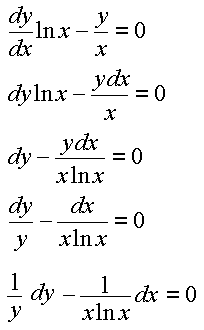The Failure of Galilean Relativity / Michelson-Morley experiment
(Proofing that the speed of light is constant)
The Ether for light
It
was thought that electromagnetic waves, like mechanical waves, required
a medium to propagate. Nineteenth-century physicists postulated the
existence of the Ether as a mass-less rigid medium which was fixed to
the stars, and did not inhibit the motion of celestial bodies.
The Solar System in the Ether
The
reference frame attached to the Ether was postulated to be the absolute
frame of reference in which the laws of electromagnetism would be valid
and in which electromagnetic waves would propagate at speed c. Hence all other frames, such as the Earth’s, would travel at speeds relative to c.
Assume
that the Ether does exist and in it the laws of electromagnetism are
defined. If the Ether frame is fixed to the stars, then the Earth must
move relative to that frame.
During a year, as the Earth rotates about the Sun with velocity v, it could be lined up with the Ether and so the speed of light in the Ether frame would be (c+v). Other times, the Earth would move opposite to this absolute frame and the speed of light would be (c-v).
Another
way of saying this is that since the Earth frame is different from the
Ether frame, light traveling in one direction on Earth would have a
different speed than light traveling in another direction. The
Michelson-Morley experiment was designed to measure this difference in
the speed of light in different direction on Earth.
__________________________________________________________
The Michelson-Morley Experiment
______________________________
The experiment
About
half of the light from the source is reflected from the half silvered
mirror onto mirror 1 and the rest is transmitted onto mirror 2. Both
beams of light travel the same distance.
If
the speed of light is different in the two directions, then an
interference pattern would be observed because one light beam will
slightly lag behind the other.
The speed at which the Earth moves around the Sun is approximately 28.8 km s-1. This is fast enough to be easily detected in the Michelson-Morley experiment.
From
the above figure, suppose the Earth, and therefore the experimental
setup, is moving in the same direction as the light beam moves towards
mirror 2. That beam should therefore move faster than the beam going to
mirror 1. The Ether is supposed to “blow” the light beam off course.
The
experiment poses the question: Is the time taken for the two split
light beams to cover the same distance on different paths the same?
Times of Flight
Before
the light beam is split, it travels at the same speed. After it is
split, one part travels parallel and the other perpendicular to the
Ether frame as seen below. The part that moves perpendicular will be
blown off course in the time it takes to go from the half-silvered
mirror to mirror 1, and back again.
Light beam travels perpendicular to Ether frame.
However the part going parallel to the Ether frame would not be blown off, but move faster in one direction than the other.
Light Beam moved parallel to the ether
Different times of flight along different paths
If the Ether does blow light, then the time to travel back and forth to mirror 1 is
Using Pythagorean Theorem from the triangle above
And substitute this gives the time of flight as
In contrast, the time to travel back and forth to mirror 2 is
Using the fact that the Earth moves much more slowly than the speed of light
the binomial theorem can be used to expand the denominators to give the time difference between the paths as
The
difference in times of flight is large enough to lead to interference
patterns in the experiment. In fact no interference was observed
thereby indicating that the Ether could not be detected.
No
matter how the apparatus was oriented, the Michelson-Morley experiment
could not produce interference patterns. They even waited six months
for the Earth to move in the opposite direction and did the experiment
again, but still no interference.








